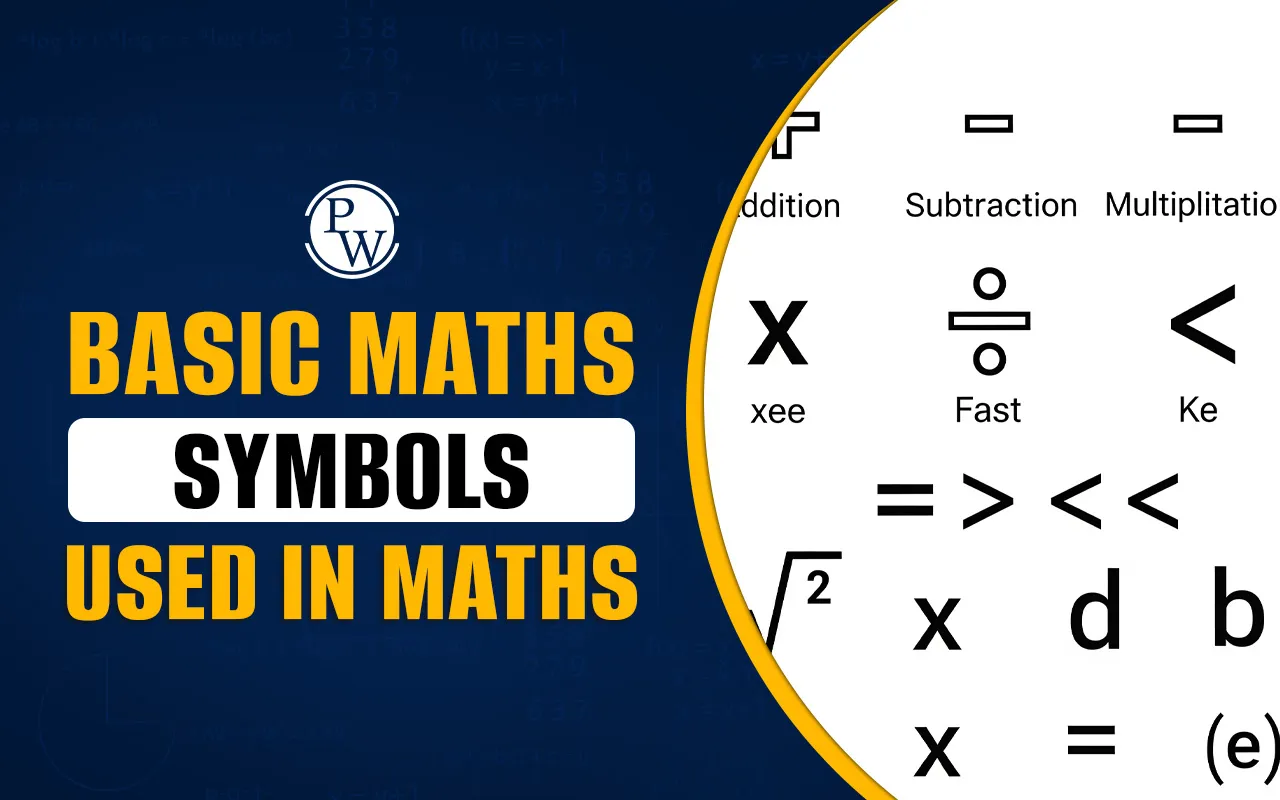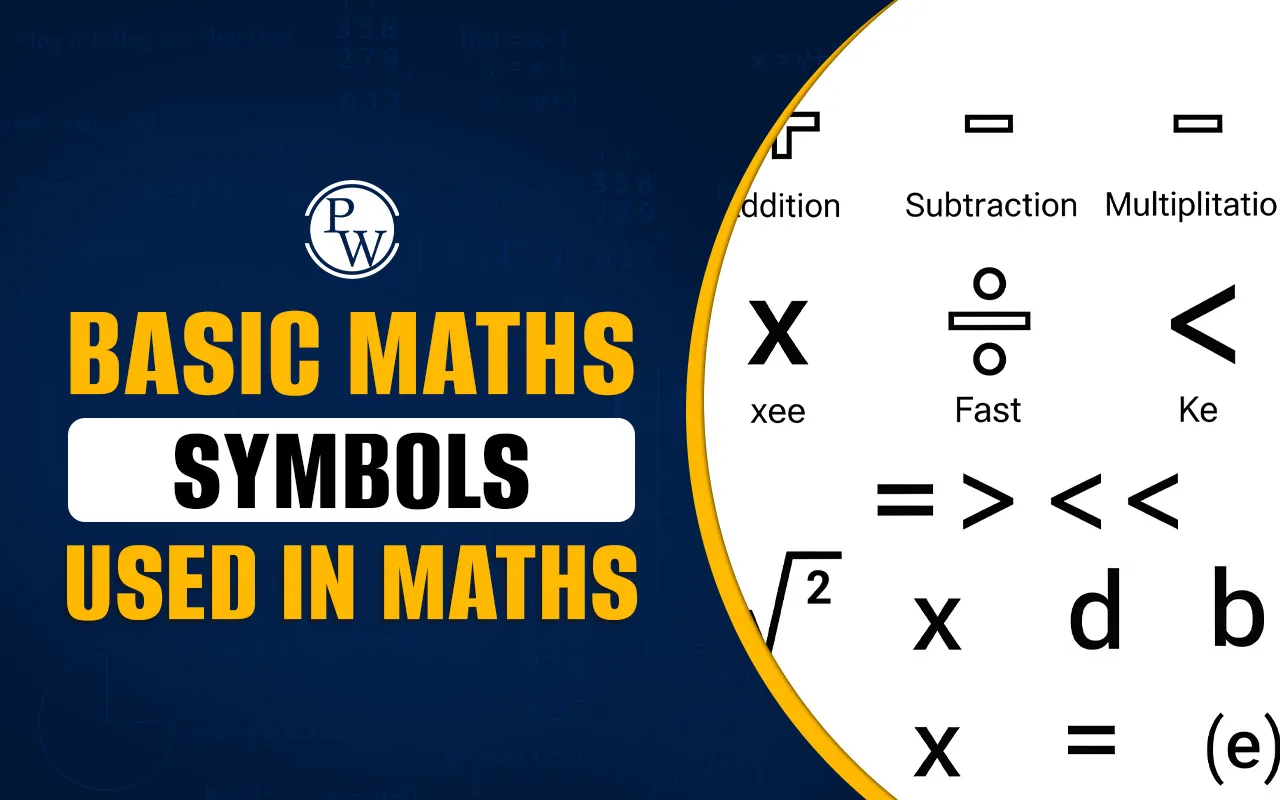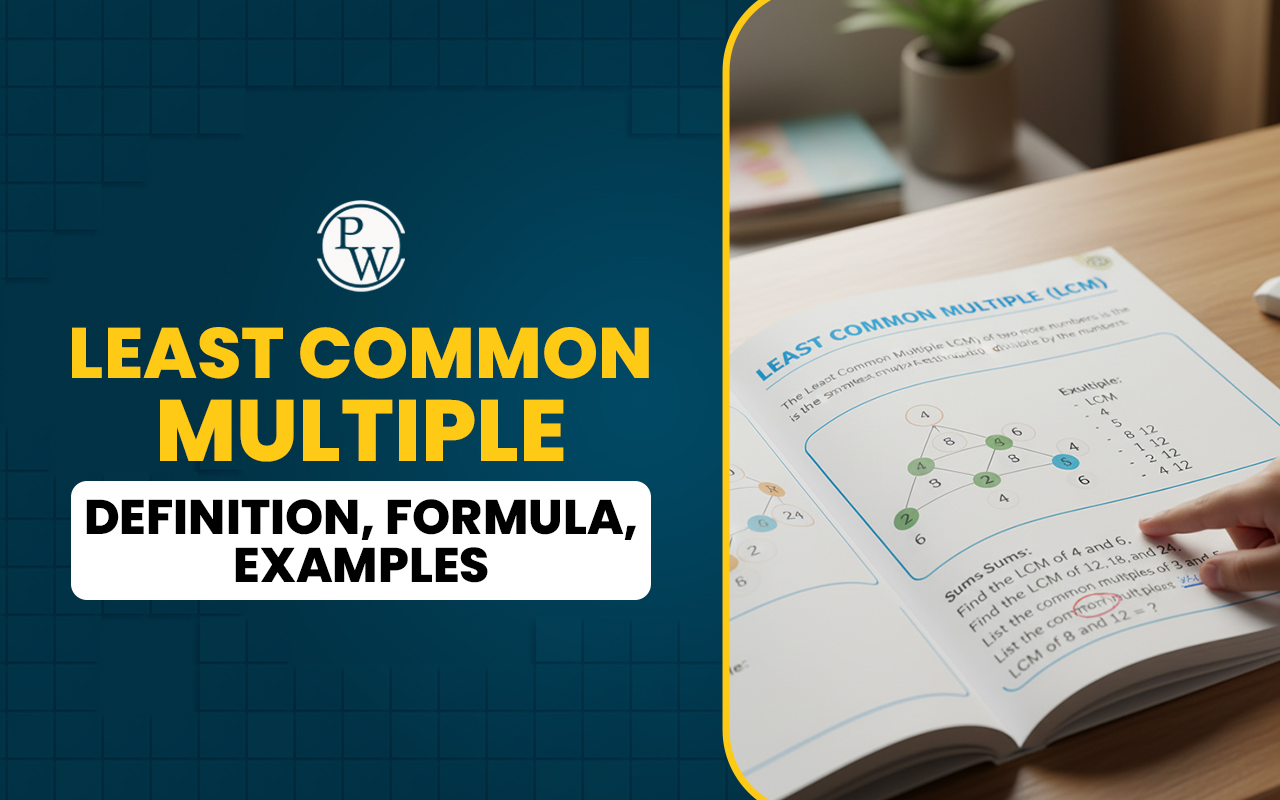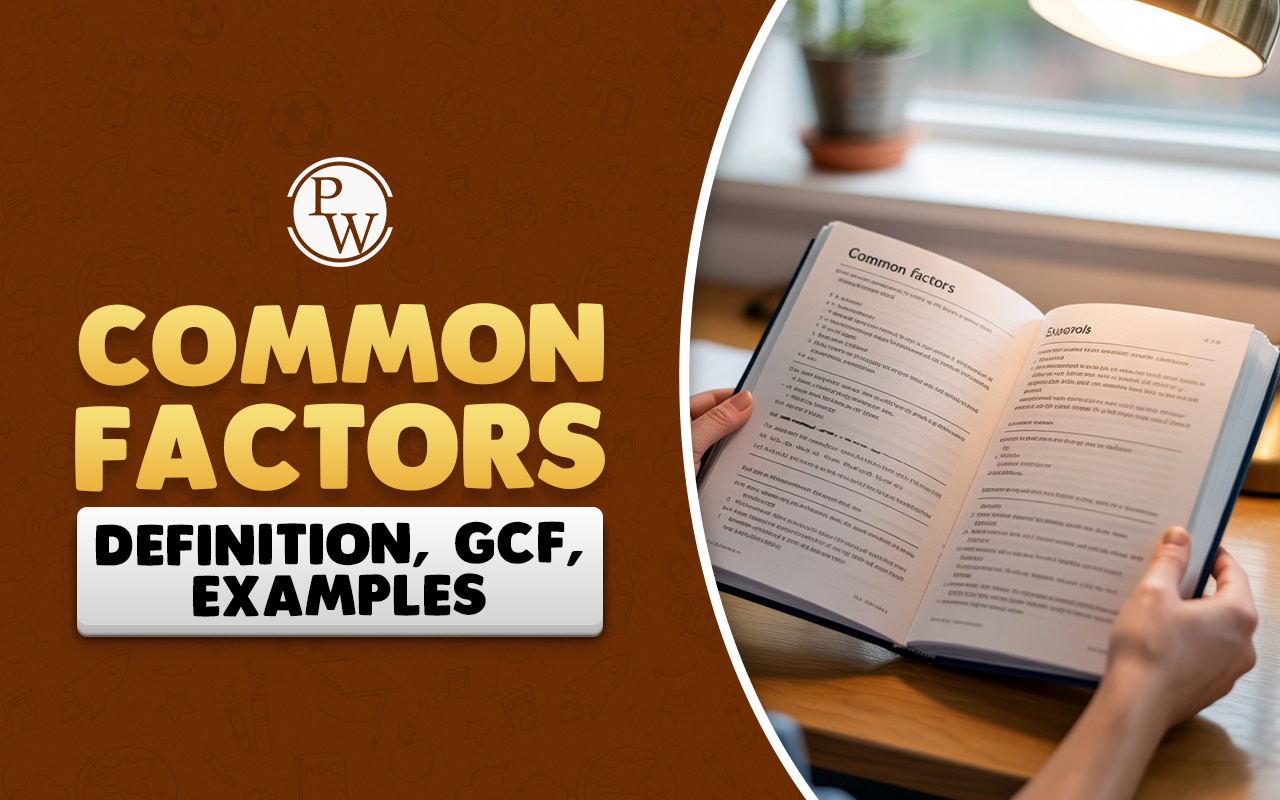

Basic Math Symbols act as a universal language in math, helping us perform calculations, describe relationships, and solve problems with clarity and accuracy. When you add marks or distribute chocolates to your friends, math symbols make the task faster and easier.
That's why knowing these symbols in math and what they represent is essential. This blog provides an overview of the most commonly used math symbols to help you understand the importance of these powerful tools.
Read More - Prime Factorization: Properties, Methods, and Examples
Why Are Math Symbols Important?
Math symbols simplify complex operations and reduce the need for lengthy explanations. Instead of writing "add three seven times," we simply write 3 x 7.
Each symbol represents a specific operation or concept universally applied in all mathematical calculations and communication.
A thorough knowledge of the meaning and applications of basic math symbol names helps students handle mathematical operations quickly and confidently.
Basic Math Symbols Chart
Here's a list of some of the math symbols and names that we commonly use. Each math symbol with a name serves a particular purpose and helps express mathematical ideas efficiently.
|
Basic Math Symbols Chart |
|||
|
Symbol |
Math Symbol Name |
Meaning and Use |
Example |
|
+ |
Plus |
Addition |
4 + 3 = 7 |
|
- |
Minus |
Subtraction |
9 - 2 = 7 |
|
× or * |
Multiplication |
Multiply |
8 × 5 = 40 |
|
÷ or / |
Division |
Divide |
12 ÷ 3 = 4 |
|
= |
Equals |
Equality |
6 + 9 = 15 |
|
≠ |
Not equal to |
Values are not equal |
13 ≠ 15 |
|
> |
Greater than |
First value is larger |
7 > 6 |
|
< |
Less than |
First value is smaller |
4 < 5 |
|
≥ |
Greater than or equal to |
At least the same or larger |
a ≥ b |
|
≤ |
Less than or equal to |
At most the same or smaller |
p ≤ q |
|
% |
Percent |
Per hundred |
20% of 50 = 10 |
|
√ |
Square root |
Root of a number |
√49 = 7 |
|
^ |
Power / Exponent |
Raise to a power |
2^3 = 8 |
|
∑ |
Sigma / Summation |
Sum of values |
∑x = x₁ + x₂ + ... |
|
( ) |
Parentheses |
calculate expression inside first |
5 × (3+4) = 5 x 7 = 35 |
|
[ ] |
Brackets |
calculate expression inside first |
[(6 + 2) × (5 - 1)] = 8 x 4 = 32 |
|
— |
Horizontal line |
division / fraction |
|
|
. |
Point |
Decimal expression |
7/2 = 3.5 |
|
∝ |
Proportional to |
One’s value change with change in other |
x ∝ y when x = ky, (k is constant) |
|
| | |
Absolute value |
Shows the absolute or positive value |
|6| = 6 and |-6| = 6 |
Classification of Math Symbols
To make it easier to learn and remember, we can classify all math symbols and names into following categories:
Arithmetic Symbols
These are the basic math symbols students frequently encounter while performing mathematical operations. The symbols are:
-
+ (addition)
-
− (subtraction)
-
× (multiplication)
-
÷ (division)
-
/ (fraction)
-
. (Decimal)
Algebraic Symbols
These symbols express equations, formulas, and relationships between unknown values. These symbols include:
-
= (equals)
-
≠ (not equals)
-
<, >, ≤, ≥ (inequalities)
-
x, y, z (variables)
-
^ (exponential)
-
f(x) (function of x)
Geometric Symbols
These symbols help describe shapes, angles, and relationships. The geometry symbols in math are as follows:
-
∠ (angle)
-
° (degree)
-
△ (triangle)
-
⊥ (perpendicular)
-
∥ (parallel)
-
≅ (congruence)
Set Theory Symbols
These math symbols are specifically used in set theory-related communication to describe groups of numbers or elements:
-
{ } (collection of elements)
-
∈ (belongs to)
-
∉ (does not belong to)
-
⊂ (subset)
-
∪ (union)
-
∩ (intersection)
Read More - 30 Fun Maths Questions with Answers
Math Symbols Solved Examples
The following examples show how different math symbols are used for problem solving in maths.
1. Add 3 times 18 and 5 times 12.
Solution:
3 times 18 = 3 x 18 = 54
5 times 12 = 5 x 12 = 60
Now, to add 54 and 60, we can write 54 + 60 = 114
So, the result is 114.
2. If a class has 9 girl students out of a total of 36 students, what is the percentage of girl students.
Solution:
Ans. The ratio of girl students to the total number of students is 9/36 = ¼
So, the percentage of girl students is = ¼ x 100 = 25%
3. Find the perimeter of a circle with a radius of 14 cm.
Solution:
The formula for the perimeter of a circle is 2πr, where π is a constant and equals 22/7, and r is the circle's radius.
So, the perimeter of the given circle is:
(2 x 22/7 x 14) cm
= 88 cm
4. If f(x) = 4x + 14, find the value of f (9)
Solution:
Putting the value of x = 9 in the given equation, we get:
f (9) = 4 x 9 + 13 = 36 +14 = 50.
5. Find the side of the square with an area of 64 square cm.
Solution:
The side of a square is the square root of its area.
So, the side of the given square is square root of 64.
Now, √64 = 8
So, the side of the square equals 8 cm.
This article clearly explains different math symbols that you can use effectively to express relations, solve problems, and communicate concepts. From basic arithmetic to advanced algebra and geometry, familiarizing the kids with symbols in math and their meanings is a great way to improve mathematical skills.
Does your child find math difficult or stressful? Many students struggle with math when concepts are not explained in a way that makes sense to them. The Curious Junior Mental Math Online Course is a 6-day program that uses interactive learning, visual methods, and relatable examples to help make concepts clear and engaging.
For just ₹29, your child can develop better understanding and improve speed with numbers. Seats are filling fast. Book a demo class today and see how your child starts enjoying math with ease.
Basic Maths symbols FAQs
Q1 When is the decimal point symbol used?
Q2 Which symbol is used to represent a line?
Q3 What symbol indicates that two shapes are similar but not in size?
Q4 What does the symbol f(x) represent in maths?













